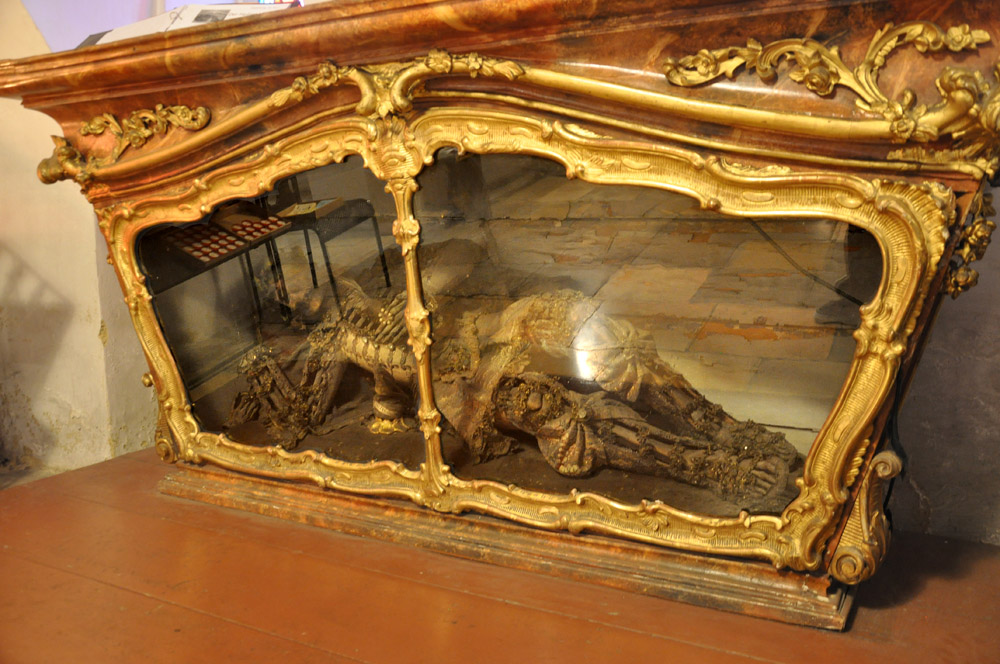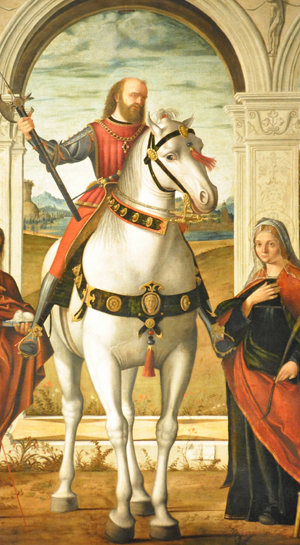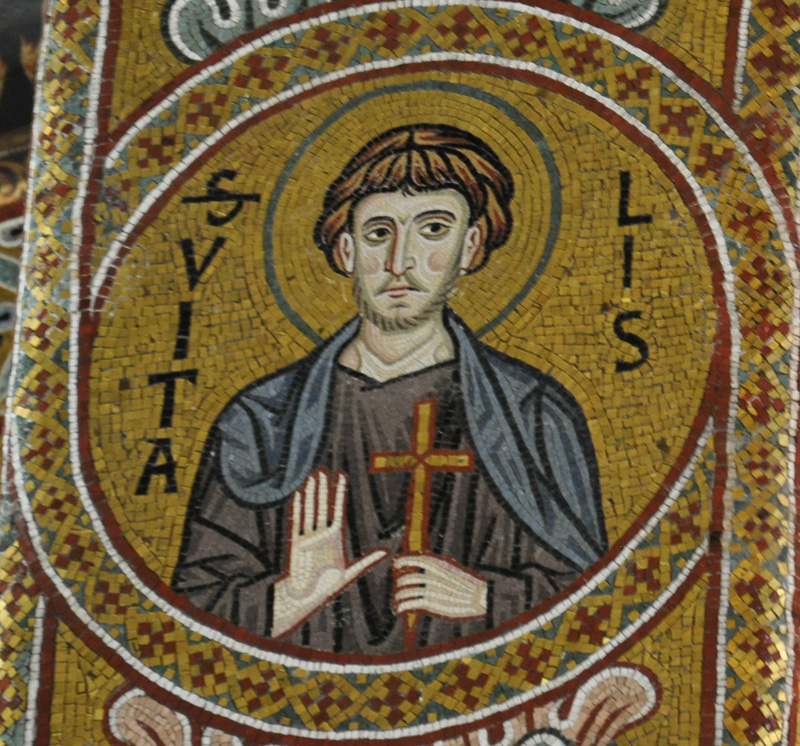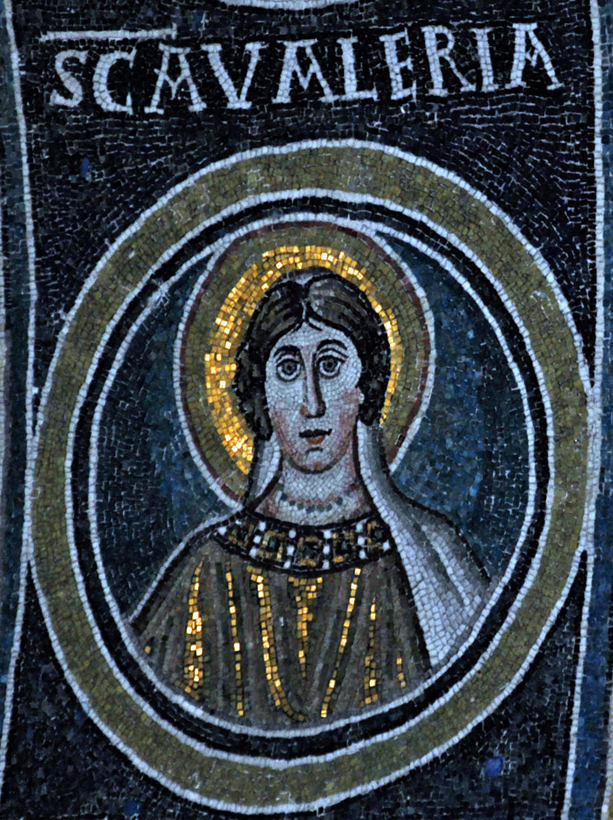As an important military figure, St. Vitalis is shown on an impressive white horse in the picture at right. St. Valeria stands at his side, dressed as a distinguished matron of the 16th century. Perhaps the most famous image of St. Vitalis is the mosaic in the apse at San Vitale, Ravenna.
The couple seem to have no fixed attributes. They appear together in this Romanesque ivory where the husband holds a book and a short sceptre and the wife a sceptre-like object with a flame burning at one end. There is a passage in the Golden Legend where the priest who had Vitalis condemned is seized by a demon for seven days and cries out, "You are setting me on fire, Vitalis!" (Ryan, I, 250). But that passage would not explain why it is Valeria who is holding the flaming sceptre. More likely the sceptres refer to the couple's status as Roman nobility and the flame to Valeria's virtue in general. In a medieval street relief Valeria carries a large pitcher in one hand and leads her young son with the other. No pitcher figures in the stories of Valeria or of the sons in the Golden Legend, nor in the Passio published in the Acta Sanctorum.

Photo of the street relief: Wikimedia Commons. Other photos by Richard Stracke, shared under Attribution-NonCommercial-ShareAlike license. This page prepared in 2015 by Richard Stracke, Emeritus Professor of English, Augusta University. Revised 2016-10-27.

Saints Vitalis and Valeria, 1514 (See description page)

St. Vitalis in the Palatine Chapel, Palermo, 12th century

St. Valeria in Poreč, Croatia, 5th century
DATES
- Feast day: April 28
- The Golden Legend says St. Vitalis died in the first century, and Papebrochius agrees that it is most likely to have occurred in the mid-1st (Ryan, I, 250. Acta Sanctorum, April vol. 3, 563.). Butler considers it more likely that they died in the 2nd century under Marcus Aurelius (II, 181).
NAMES
- The Venetian form of his name is San Vidal.
- Elsewhere in Italy he is known as San Vitale.
BIOGRAPHY
- Golden Legend #61.
- Acta Sanctorum, April vol. 3, 562-65.
- Butler, II, 181.
ALSO SEE